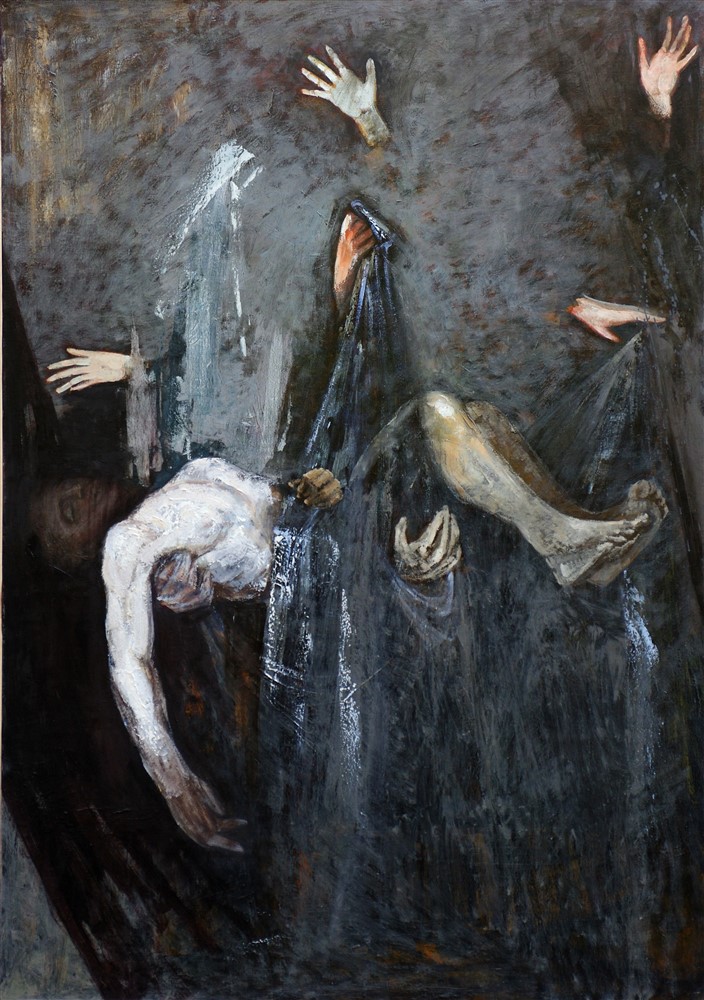Blog
“De-Evolution” by Gayane Manasyan
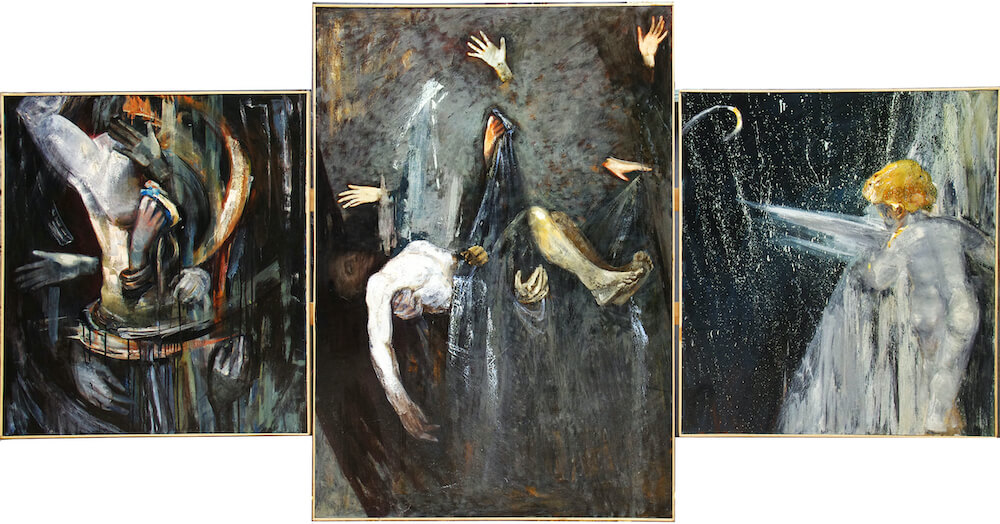
Review by art critic David Andriadze
“De-Evolution” is a piece of fine art, a triptych in oil and tempera on canvas, composed on the basis of specific conceptual-narrative scheme. And for the analysis of the narrative, it is crucial to define the motive of the status, which it carries in itself as an artistic text.
Modern art, and generally art with the aim of self-reflection, does the analysis of its fiction and right in this sense it serves as meta-fiction.
In De-Evolution this meta-fictional motivation is less obvious, i.e. the meta-fictional circle as the “form” of artistic text, is less distinct. On the other hand, distancing from the artistic narrative is not perceived, i.e. the “content” from which the distancing should represent the conceptual strategy of the painting or meta-painting is slightly revealed.
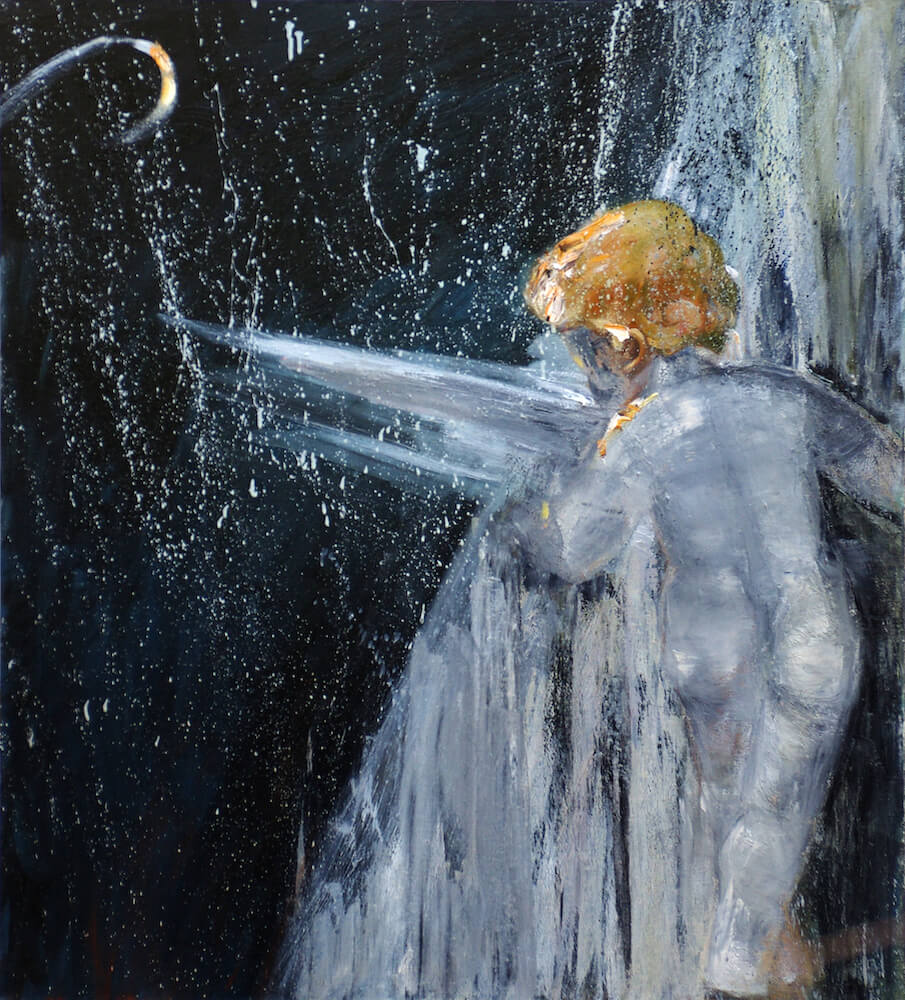
Those imaginary passions, which author tries to depict, seem to concern her deeply, that is why she employs narrative, as the concept of De-Evolution of happenings (events). Presumably, the author intends to order (express) those happenings with plasticity and in colorful manner (and not just “a story”), to tell us with the “evidence” and in this process to understand herself the hermeneutical text. Although, Post modernism implies the death of big narratives and their programmatic denial, obviously, this resource stays according to which, there are specific ontothemesatizms which are permanently important in the culture and always remind of themselves.
Exactly with those “reflective” figures-allusions or pleromas the young artist tries to offer her copyright (original) version of De-Evolution and refers to a paradigm not the spiritual, but corporeal, namely, the paradigm of body, or as Arnold Gelen would say, the history of “ passionate meat”.
“De-Evolution” this is a kind of postmodernist reincarnation of Christian narrative and is represented by the author as mediapictorial cycle supported by the Biblical allusions. Along with this, these allusions are corrected with such kind of postmodernist implications which we ,nowadays, call “bodily practices”.
Apparently, the author is well aware of visual culture format of the West, and generally the language of this culture with its ideo-sociolects, without which it is practically impossible to deconstruct the authentic existential experience.
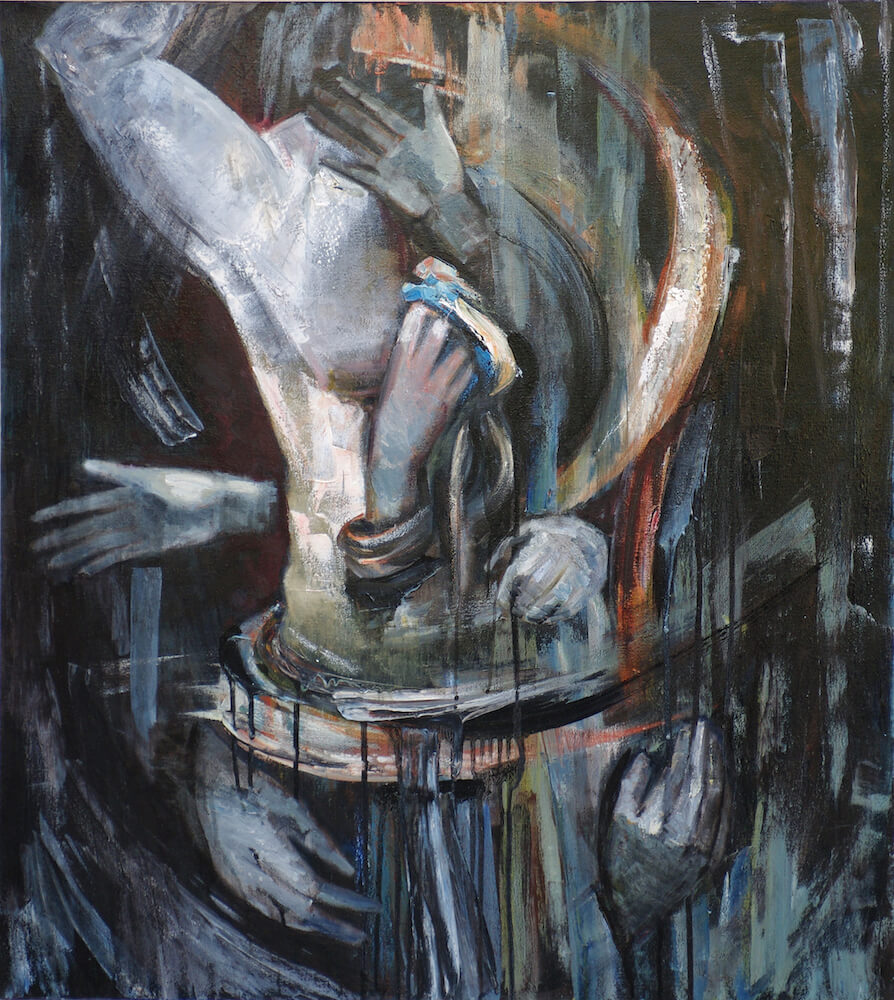
The triptych in its particular way echoes the thesis by Jean-Luc Nancy, that bodies are always catastrophic, that bodies are really our bare alert. In addition, this body is always intended for the eye of others, it aims at others; and this factor of Alter specifically revels the adventure of the body: body that is under de-evolution thro the imago of a child, a child, which exactly, with its “childhood” represents ontology age of human being. Exactly in this “age” the human being is themasized with its “apodictional (contradictional) ezoterizm” – this oxymoron.
Biblical exhortation – “ become like little children” in De-Evolution represents not spirit/soul, but namely „corpus” dispositive. It is also interesting , those stories of the body in this triptych are represented as “cold”, anemic, distant and partially pornoscopic imagos, as phalous, aphalous and acephalous moduses; abandoned, lying and discarded, removed and descended from the cross participations of the body, finally, merges the boundaries between “handwriting” (resp. the painting depicted on the canvas) and “ontology” and at the same time and raises the problem caused by the methodological skepticism, if it is possible that the body is characterized by the fullness, and how possible it is for the body to fill the space; or, maybe , the corpus itself is the “open space”, which neither grows nor shrinks, neither gains nor loses anything. This is the body which tells us the story intending the “childhood”: the body that is obsessed by the extreme desire of mortality, fatality and death. However, this is the desire that does not have fear even of the death itself.
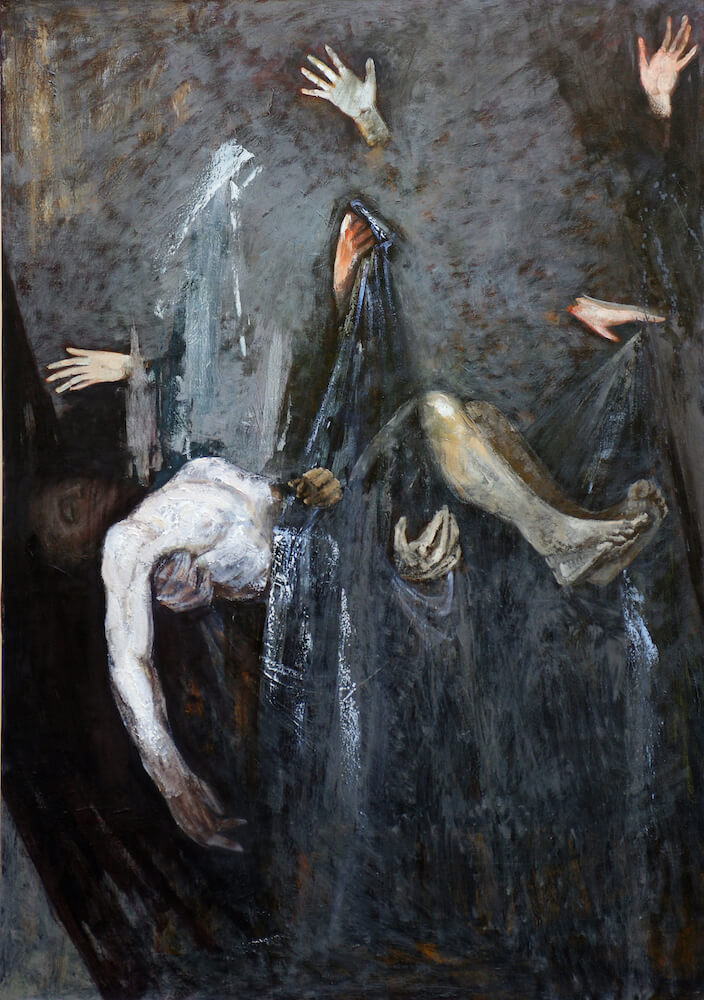
“De-Evolution” also makes us think that the body itself, during its whole life, is in fact the corpse: id est the body that is given to me as my “Ego” during my vital life, in that temporal flow, which the author of “creative evolution”(Henry Bergson) calls “duree”.
Jesuits believed and preached to “be corpse”, that is “to be without passions”.
“De –Evolution” if observed closely may expose one more implication, that is the kind of passion that rejects the passion itself as the ontico-ontological content, and instead offers a new topos of passion within the symbolic.
These all proves that the artist has primary feeling (perception) of metalogical and metafictional discourse, which she carries out in pains, namely by the pictorial- artistic narrative; rather, exactly those “pains” are prerequisite of that she will not stop working on the path of the artistic reflection related to De-Evolution.
David Andriadze
PhD in Sociology of Art, Professor


